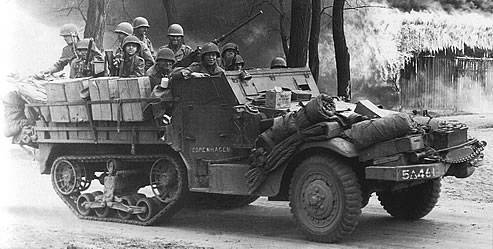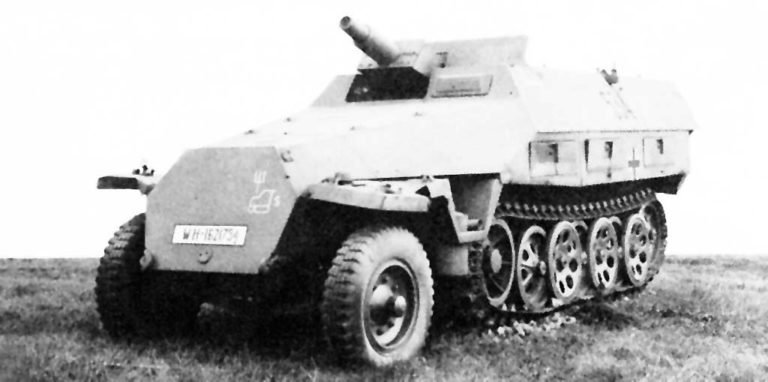.
Helmets were introduced in the First Word War and did cut the count of killed in action troops by about a half (rule of thumb) by protecting the skull against most fragments (mostly of high explosive grenades).
Fragmentation protection vests (colloquially 'flak vests') were introduced for real in the Korean War and had a similar effect on top of the helmets' effect, by protecting the torso against most fragments.
The armoured personnel carrier (APC) was invented in the First World War and introduced for real for the Second World War. It was also said to have reduced the killed in action count by about half. The APC protected against stronger fragments (still not all fragments, though) and also against most (not all) bullets. Even the notoriously poorly-armoured M3 Half-track was a huge improvement over any unprotected vehicle.
APCs had thus a spectacular effect; it was much easier and much quicker to approach hostile infantry positions in an APC and the losses were smaller than without APCs.
The open-topped APC designs were followed by closed APC designs since the 1950's.
The force developers and doctrine developers were dissatisfied with a mere APC, though. APCs had already been armed with support firepower during the Second World War, or used for specialised purposes such as forward observer, scout, engineer teams, longer range radio vehicle, illumination vehicle or anti-tank gun carrier. The result was inevitably a loss of life-saving and combat-accelerating protected transport capacity for infantrymen.
There were calls to move from transporting infantry to drop-off locations towards fighting while mounted, and a modification of the APC concept into the IFV (infantry fighting vehicle) concept was favoured. The concept for mounted infantrymen using their own weapons while riding an IFV did not stand the test of time, tough. Nowadays IFVs have similar movement and sensors as main battle tanks, albeit using autocannons and anti-tank guided missiles rather than one powerful large calibre single shot gun.
The costs have risen badly, and IFVs are so expensive that we cannot afford enough of them to transport enough of our infantry in IFVs. A move towards wheeled APCs as cheaper means of transportation wasn't spared from the general urge to demand gold-plating and autocannons, as visible with the American (Swiss Piranha IV design) "Stryker" vehicles, which got first very expensive and nowadays receive autocannon turrets at costs that exceed the costs of an APC.
APCs have certain advantages and disadvantages compared to IFVs:
(+) lower costs
(+) higher seat capacity (often about 10 seats in APCs, about 7 in IFVs)
(+) usually lower weight, thus a tendency towards lower ground pressure
(+) usually a lot smaller (especially lower)
(-) lesser sensors
(-) less firepower
(-) gunner doesn't get directed by a commander
The protection of IFV and (H)APC can be about equal for the hull, this depends on requirements.
The title promised a praise, but so far there's just a historical and status quo summary.
Here's the praise; an APC (a.k.a. "battle taxi") is much more versatile and survivable than an IFV.
Few would agree outright. Isn't an IFV more versatile because it has more firepower? Isn't an IFV more survivable because it can destroy threats and usually has better protection?
The tracked armoured personnel carrier has superior versatility compared to an IFV
This gets obvious once one looks away from spec sheets and line drawings, moving attention towards how AFVs are used in battle.
An APC has superior cargo and passenger capacity, and this is of great utility.
- It can move infantry into the fight.
- It can extract infantry from a fight.
- It can extract prisoners of war from a battlefield.
- It can extract civilians from a battlefield.
- It can supply troops in contact with the enemy with (hot) food.
- It can supply them with beverages.
- It can supply them with munitions.
- It can supply them with batteries (and fuel).
- It can supply them with tools.
- It can supply them with cold weather and night equipment.
- It can transport equipment on its roof.
The importance of being able to rather safely transport stuff and people though the last couple kilometres to a company in contact is easily underestimated. An IFV has transportation capacity as well, but much less so - and it would inevitably have a crew of at least two during supply runs because the autocannon turret is too enticing, while an APC could very well ditch the gunner and make a risky supply run with a crew of only one (or even unmanned).
Moreover, IFVs have only about 2/3 the transport capacity of APCs and are more likely to get fixed rather than foldable seating, which means even more volume is lost for transportation. A fine APC design would have foldable seats for benches and a floor that's suitable for pushing or pulling pallets.
 |
Puma IFV
|
APCs and IFVs can be organised in different ways. They may be part of a specific section of infantrymen (section leader then being IFV commander, usually dismounting with the other dismounts) or it can be a support assets (one APC or IFV could move different sections in battle). The latter is particularly unpopular because it's less suitable for the quick assault doctrines that originally spawned the 'infantrymen shoot from inside their armoured vehicle' approach. You can also be quick while riding a battalion-level APC, but it's not so natural.
- Most missions from the list above are much more natural to non-organic* APCs than organic APC and IFVs.
- There are huge advantages to be had in separating infantry sections from their vehicle, though.
- The section leader does not need to occupy his mind with the vehicle while dismounted.
- The vehicle can be hiding many kilometres away, while an organic IFV would be kept close to the infantry fight.
- Less training requirements for the dismounts.
A disadvantage is that the small (APC) crew of two would have to do all routine maintenance on their own, but that's not so terrible with bandtracks and they may often visit a maintenance point in the 'rear'.
The tracked armoured personnel carrier has superior survivability compared to an IFV
An IFV could fight against main battle tanks with its guided missiles (and its autocannon), but doing so needlessly exposes it to MBTs. You can kill the MBT with a man-portable missile fired by dismounted infantrymen (or dedicated tank hunter troops).
An IFV is a fire support machine. It needs to expose itself in line of sight with enemies to give said fire support. An APC may be misused as a fire support machine (the American FM 7-7 actually mentions this as doctrinal), but it can also be limited to 95% transportation and 5% assault transportation roles.
An IFV carries great secondary explosive hazards internally (autocannon munition, anti-tank guided missiles) or else it doesn't have much staying power regarding its firepower.
The APC would have better odds of survival even with lesser protection than an IFV simply because it's going to be exposed to less risks. This is especially egregious as IFVs usually fall well short of having the protection level of main battle tanks. A MBT+APC combo would use the better-protected MBTs for fire support that a MBT+IFV combo would largely give with its IFVs.
I consider IFVs to be an ill-advised and overrated concept. The IFV's fans ignore that the IFV concept keeps not delivering on its promises.
The extremely high costs of today's IFVs (due to the electronics of the turret that are equals to MBT electronics) leads to poor infantry strength and in case of long-ongoing wars it leads to most infantrymen lacking protected mobility because peacetime spending was wasted on gold-plated IFVs.
The "battle taxi" concept is underrated because people don't quite understand the importance of transportation on the battlefield. They pay too much attention to the shooting part.
S O
*: Not belonging to the same unit.
.




